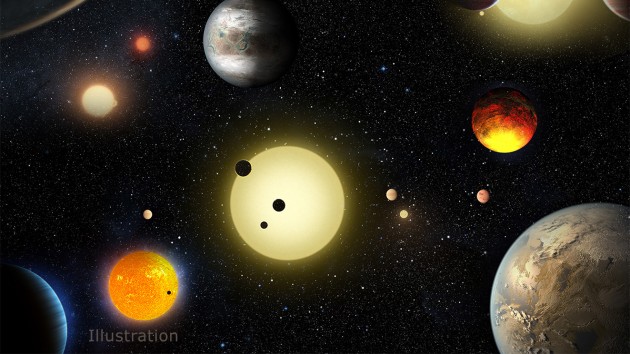
Researchers already have plenty of research to perform on the 984 validated planets found by NASA’s Kepler telescope, but that workload was just doubled thanks to new information revealed on Tuesday. To be exact, Kepler has verified 1,284 new planets, which NASA says is the single largest finding of planets to date.
The analysis comes from Kepler’s July 2015 candidate catalog, which spotted a whopping 4,302 potential candidates. Of those, scientists say 1,284 had a 99 percent or greater chance of being a planet; an additional 1,327, meanwhile, are likely to be planets as well, but they fall under the 99 percent mark, which scientists say is the minimum required to earn “planet” status.
“This gives us hope that somewhere out there. around a star much like ours, we can eventually discover another Earth,” said Ellen Stofan, chief scientist at NASA Headquarters in Washington.
The latest crop of exoplanets was the result of a new statistical analysis method developed by Timothy Morton, an associate research scholar at Princeton University. His method allowed researchers to assign each Kepler candidate a planet-hood probability percentage, making the process of identifying potential candidates much faster.
“Planet candidates can be thought of like bread crumbs,” explained Morton. “If you drop a few large crumbs on the floor, you can pick them up one by one. But, if you spill a whole bag of tiny crumbs, you’re going to need a broom. This statistical analysis is our broom.”
Among the validated planets, nearly 550 could be rocky like Earth, with nine of them orbiting their parent star in the habitable zone—the place where surface temperatures allow liquid water to pool.
Since launching in 2009, Kepler has identified 2,325 potential planet candidates, giving scientists plenty hope that we’re not alone.
“This work will help Kepler reach its full potential by yielding a deeper understanding of the number of stars that harbor potentially habitable, Earth-size planets—a number that’s needed to design future missions to search for habitable environments and living worlds,” said Natalie Batalha, Kepler mission scientist at NASA’s Ames Research Center.













